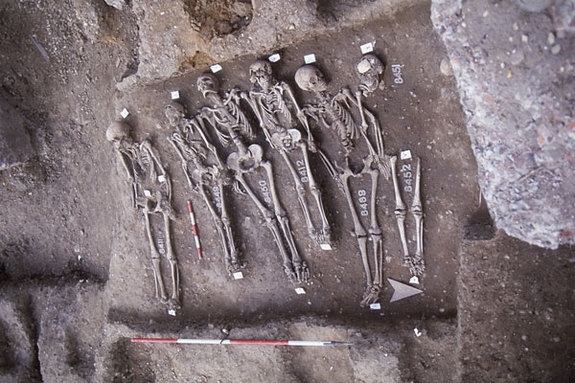
© Museum of LondonDental pulp taken from Black Death victims, like these, excavated from the East Smithfield cemetery in London, allowed scientists to sequence the genome of the bacterium that is believed to have killed them about 660 years ago.
The bacterium blamed for the Black Death that wiped out more than a third of Europe's population within about five years of the 14th century looks an awful lot like the modern versions of the plague-causing bug, new genetic research indicates.
By taking the now-powdery black pulp out of the teeth of
plague victims buried in London's East Smithfield Cemetery - a cemetery established solely to handle the onslaught of the Black Death once it arrived in the city in 1348 - researchers have managed to reconstruct the entire genetic blueprint, or genome, of the bacterium blamed for the devastation.
Since science already have the same information for modern strains of plague bacteria, this gave the researchers the chance to explore perplexing questions about plague.
In fact, all modern, human-infecting strains appear to have separated from a common ancestor shortly before the Black Death, making the medieval bacterium the grandmother of modern plague, as one of the researchers said.
Still, the genetic similarity between bacteria leaves the big question: Why does modern plague, while deadly without antibiotics, pale in comparison to the devastation and wildfire-like spread of the Black Death?
Since genetic changes don't appear to explain this change in behavior, the researchers suggest an alternative: The 14th-century bug hit at a time when Europeans were already down. They were living in a cold, wet period that caused crops to fail, and they were most likely already struggling with other diseases.



Comment: The reader is encouraged to review this in-depth article that sheds more light on this subject: New Light on the Black Death: The Cosmic Connection by Laura Knight-Jadczyk.